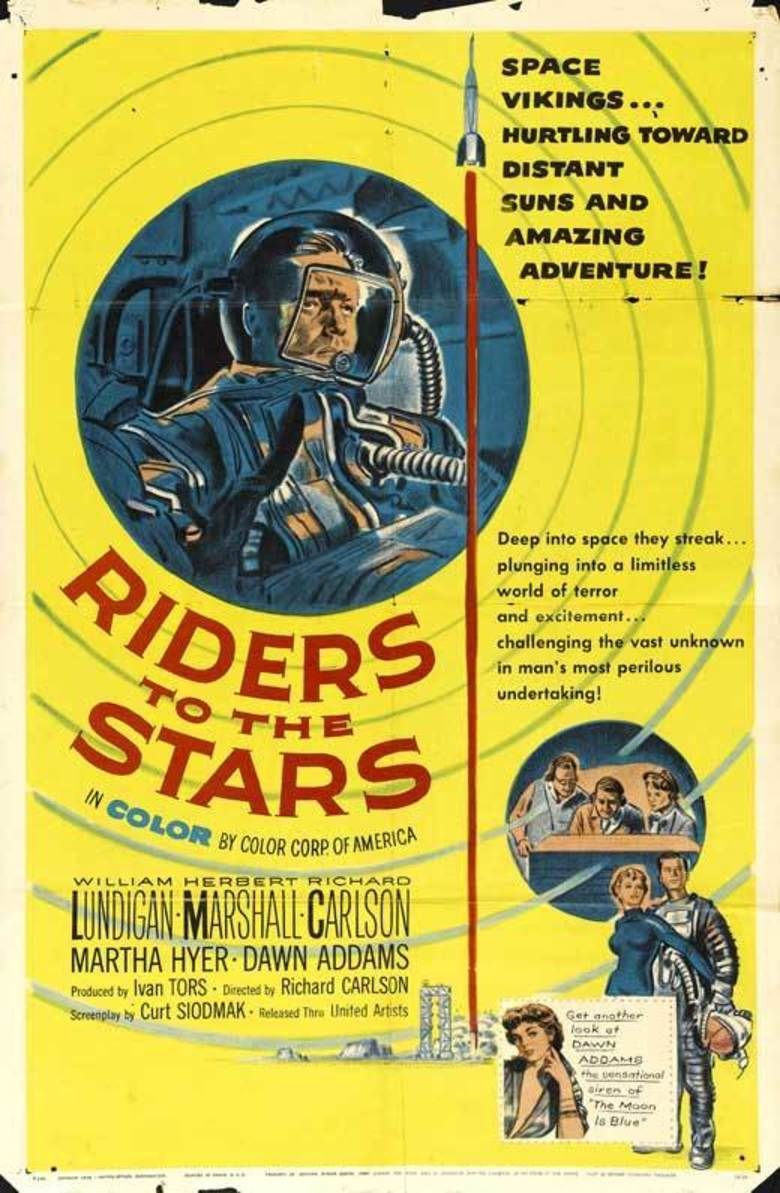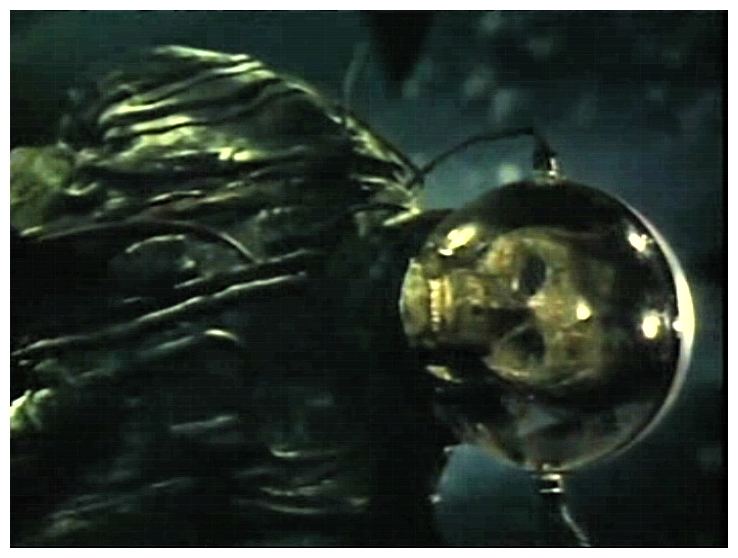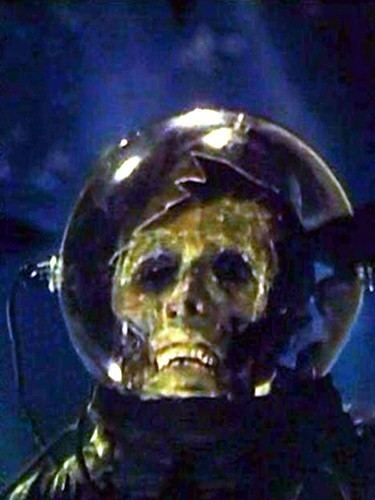Riders to the Stars
5.8 /10 1 Votes5.8
Duration Country United States | 5.6/10 IMDb Genre Drama, Sci-Fi Language English | |||||||||||||||||||||||||||||||||
 | ||||||||||||||||||||||||||||||||||
Director Richard CarlsonHerbert L. Strock(uncredited) Release date January 514, 1954 (1954-01-514)(U.S. release) Cast (Dr. Richard Donald Stanton), (Dr. Donald L. Stanton / Narrator), (Dr. Jerry Lockwood), (Dr. Jane Flynn), (Susan Manners) Similar movies Interstellar , 2001: A Space Odyssey , The Martian , Avatar , Gravity , Independence Day Tagline SEE! men and equipment float in air, trapped where there is no gravity - no up or down! | ||||||||||||||||||||||||||||||||||
Riders to the Stars is a 1954 independently made American science fiction film produced by Ivan Tors Productions and released by United Artists. The film was directed by Richard Carlson (who also stars) and Herbert L. Strock (uncredited) and also stars William Lundigan, Martha Hyer, and Herbert Marshall.
Contents

Riders to the Stars is the second film in Ivan Tors' "Office of Scientific Investigation" (OSI) trilogy, which was preceded by The Magnetic Monster (1953) and followed by Gog (1954).

Plot

A group of highly qualified single men, including Dr. Richard Stanton (William Lundigan) and Dr. Jerry Lockwood (Richard Carlson), are recruited for a top secret project. They undergo a series of rigorous physical and psychological tests, during which Stanton becomes attracted to the beautiful Dr. Jane Flynn (Martha Hyer), one of the scientists testing the candidates. After most of the candidates have been eliminated from consideration, the four remaining are told about the purpose of the project.

Stanton's father, Dr. Donald Stanton (Herbert Marshall), is the man in charge. He and his colleagues are working on manned space travel. They have found, however, that even the best quality metal alloys available eventually turn brittle in the harsh environment of outer space. Since metal-based meteors are not subject to these metal fatigue stresses, the scientists want to recover samples before they enter the Earth's atmosphere to discover how the meteors' "outer shell" protects them. To accomplish this, they need to send men into space, something that has never been done before. Stanton, Lockwood, and Walter Gordon (Robert Karnes) accept the dangerous assignment, while the fourth candidate quits.

Three one-man rockets are launched a couple of hundred miles into space in order to intercept an incoming meteor swarm. Gordon makes the first run to capture a meteor; it turns out to be too large for his spaceship's nose scoop, and the ship is destroyed in the collision that follows. Lockwood suffers a mental breakdown when his view screen shows Gordon's still space-suited but now skeletal and weightless body floating toward him. Panicked and delusional, he fires his rocket engines and blasts away from Earth, heading into deep space to his doom. Stanton then misses the main swarm, but a stray meteor crosses his orbital path. He decides to pursue it, despite a warning from ground control that he may use too much fuel in the attempt and burn up upon re-entry. Stanton snags the meteor in time and manages to survive a crash landing with the now captured meteor safely intact. He is rewarded for his heroism with a kiss from Dr. Flynn.

When the meteor is examined, it is discovered to have an outer coating of crystalline pure carbon. With this discovery, the U. S. can now build safer rockets and space stations for the inevitable conquest of space.
Production

Riders to the Stars was the first film from director and star Richard Carlson. In order to create a more authentic feel for the story, contemporary newsreel footage of WAC Corporal spacecraft was used. Additionally, one authentic sequence shows "two white rats in a rocket beyond the force of gravity ... one of the most startling series of photographs ever made."
Five years later, actor William Lundigan would go on to star in the syndicated future space television series Men Into Space (1959), which could be considered a sequel to or at least a continuation of the ideas explored in Riders to the Stars.
Riders to the Stars was filmed and released theatrically in color provided by Color Corporation of America, but prints struck for television syndication were in black-and-white. Turner Classic Movies aired the color version.
Reception
Critically reviewed in The New York Times, Riders to the Stars was considered lackluster and gimmicky. "Spliced in to give all the idiotic, pseudo-scientific mumbo-jumbo a precarious footing in fact are newsreel shots ..." Later reviews, however, noted that the filmmakers had created a "near-documentary" by using rocket footage and scientific equipment as a precursor to the coming space age, all within an "unremarkable film".
References
Riders to the Stars WikipediaRiders to the Stars IMDb Riders to the Stars themoviedb.org
